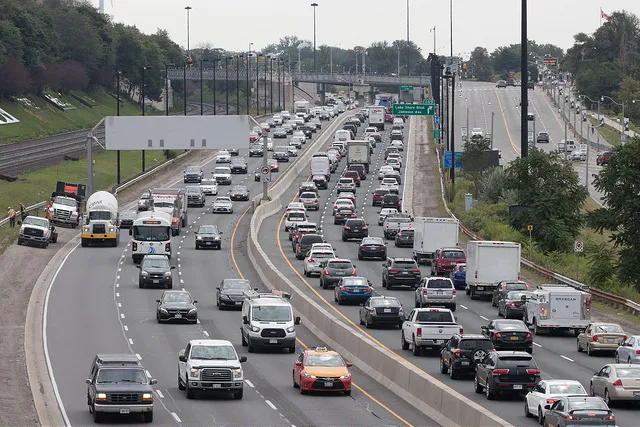On July 25, Ontario’s new Minister of the Environment, Conservation and Parks Rod Phillips repealed the Climate Change Mitigation and Low-Carbon Economy Act to eliminate the cap-and-trade system, which has been working since 2017 to reduce harmful pollution. What most Ontarians don’t know is that the repeal of this Act also leaves the province without carbon pollution reduction targets – a basic tenet of climate action – and without a plan to prevent catastrophic climate change or adapt to the realities of a 21st century low carbon economy.
The Ontario government has repeatedly promised an alternative climate plan, but the only thing it has done so far is cancel programs. Where does this leave Ontarians?
First, Ontario families are losing out on major planned investments in buildings and transportation systems across the province. By putting a price on pollution and collecting revenue from Ontario’s biggest polluters, the cap-and-trade system reinvested in programs that were actively helping households and businesses save money by reducing their energy use. This included funding to support retrofits of homes, schools and social housing. It included funding for electric school buses (so kids don’t have to breathe diesel fumes), dollars to accelerate service increases on the GO train system, support for businesses to buy greener trucks, and all of the provincial funding for cycling infrastructure. Since the cap-and-trade system has been cancelled, dozens of such programs have gone out the window.
Second, Ontario families have been signed up for some significant costs, including but not limited to reimbursing businesses that had previously paid for cap-and-trade allowances. When the Ontario government cancelled the cap-and-trade system and broke its contract with industry, it immediately generated investor uncertainty: the German government warned multinationals to be wary of investing in Ontario, and California moved quickly to protect their businesses that had been trading with the province. All told, this results in real capital and jobs leaving the province.
We can also expect escalating costs from the impacts of climate change-related weather events. According to the Insurance Bureau of Canada, 4 of the 5 highest yearly catastrophic disaster payout years from 1983 to 2016 occurred after 2010 – the highest being over $5 billion in 2016. Ontario’s heat wave in March 2012 caused losses to local fruit production estimated by Environment Canada to be to the order of $100 million – a hit to one of Ontario’s important rural industries and the grocery bills of Ontarians. We have yet to tally the cost of the nearly 900 forest fires that have blazed in Ontario this year alone.
If you think that seems like a bad deal for Ontarians, it’s because it is.
As Minister Phillips said in a recent interview on CBC’s Metro Morning, Ontarians want climate change solutions. Indeed, a February 2018 poll published by the Ecofiscal Commission revealed that 70 per cent of Ontarians think taking action to solve climate change is a high priority. The new government has repeatedly promised an alternative climate plan but has not yet taken any action. In the meantime, air pollution continues to place a burden on our healthcare system – in Toronto alone, air pollution from all sources is estimated to lead to 1,300 premature deaths and 3,550 hospitalizations annually, according to Toronto Public Health.
This government has been clear about what they’re not going to do – it’s time to hear what they are going to do.
It’s hard – though not impossible – to imagine a credible climate plan that can be built from the rubble of what’s been lost. To start, the government must reinstate Ontario’s climate targets: from 1990 levels, Ontario committed to 15 per cent reductions in carbon pollution by 2020, 37 per cent by 2030 and 80 per cent by 2050. Anything less puts the province out of step with the Paris Agreement, which is signed by 194 parties, including Canada.
A credible climate plan will include strong actions to reduce emissions from transportation, Ontario’s biggest source of carbon pollution. To start, the government must deliver on its commitment to fund transit (not just subways) across the province. It must reinstate incentives for cleaner vehicles and retain land use policies that prevent sprawl. New market-based measures, like fair road pricing, will be needed to curb pollution and congestion and raise money for transportation investments.
To secure our health and prosperity, Ontarians need immediate action to bring in a credible climate plan.







